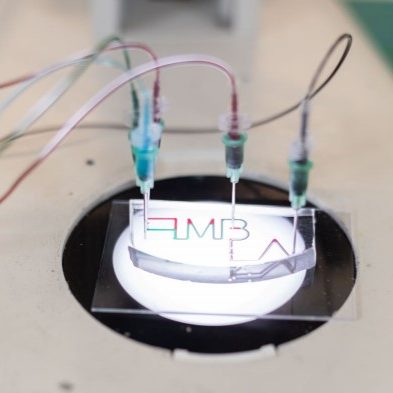Science Fika
What are the ultimate elements that constitute the matter in our universe? What gives origin to shining stars and black holes? How many worlds are there? What are the mechanisms that can deteriorate our health and eventually lead to disease? What are the secret forces that drove simple chemical compounds to form more complex molecules that ultimately created life on Earth? The universe uses humanity to answer these questions. Science is one of the ways the universe uses to interrogate itself. And to pose the final question: why there is something rather than nothing?
A different kind of fika
Come and enjoy some coffee and science!
The Science Fika is a recurring event where we share our passion for science and talk about different topics in easy-to-understand language. At each event a speaker will have a 20 minutes presentation about a scientific concept, to stimulate your curiosity and to show you the beauty of science. We will provide free fika after the presentation, giving you the opportunity to mingle and discuss in a more informal way. So welcome, sit back and enjoy some exciting science!
Lectures will take place in collaboration with Folkuniversitetet and Proteintech in spring 2025
Upcoming Fikas

The Rossby Wave Challenge: Understanding Future Weather Extremes
Gigantic Rossby waves in the atmosphere drive our weather, from cold snaps to heatwaves, and climate change could make their impacts even stronger.

Soap bubbles: no child’s play for science
Newton is said to have been inspired by soap bubbles, and Staffan demonstrates surface tension with fun experiments such as double bubbles and “piercing” bubbles without them bursting.

Taking inspiration from nature to make the fuels of the future
In the search for sustainable fuels, hydrogen, which only produces water as a byproduct, could be a solution, and Sigrid is developing bioinspired molecules for green production.

Scarlatto, carmine and rossi: Investigating red dyes in early modern
knitted caps
A multi-analytical approach to the identification of red dyes in six archaeological and historical knitted caps revealed three different dyestuffs and four recipes were used to achieve the colors. A follow-up experimental reconstruction project explored how these reds may have been produced using 16th century recipes.

To be tough: how the 360-million-year-old fossil skin tells us about the lives of the earliest land vertebrates
400 million years ago, our ancestors were fish. To step onto land, they needed not only legs, but also a new skin that could prevent the body from drying out. Recently, the skin of those first land dwellers was discovered, surprisingly distinct from amphibian skin. It suggests a lifestyle that has no equivalent in living animals.
Past Fikas

Experiment with us at SciFest!
This year Science Fika will have a stand at SciFest. Here you can try scientific experiments that you can even redo in your own kitchen!
Join us at booth 37!

Red giant stars: pulsating and dusty ancients
Discover how old stars swell, pulsate, and disperse gas and dust – and why red giants are important for life in the universe.

The Solar Wind : What lies between us and the Sun
See how the Sun’s solar wind paints our skies with auroras and shakes up satellites as it races across the solar system.

Not Only Pyramids and Mummies: Researching Dreams and Psychology in Ancient Egypt
When we think of ancient Egypt, we imagine pyramids, treasures, and mummies—but Egyptologists at Uppsala University are uncovering something different: the dreams of ancient Egyptians, recorded by scribes on papyrus bookrolls. This talk explores the psychology of ancient Egypt, revealing surprising aspects of this fascinating civilization.

Membranes Fusing: A Short Story of How a Virus Infects a Cell
Membranes are essential for life, creating compartments with unique conditions while allowing controlled interactions. One striking example is how influenza viruses enter cells. This talk explores the fascinating ways membranes function in biological systems and the process behind viral infections.

When Machines Dream in Equations: Will Technology Reshape Science (again)?
Technological revolutions like the microscope and computer have transformed science and scientists’ identities. Today, advanced AI systems are moving beyond assistance, engaging with abstract scientific ideas—and even “dreaming” in equations. In this talk, Eliel Camargo-Molina explores how past innovations reshaped science and what they reveal about today’s AI-driven transformation.

Open Research: like usual research, but better
Research may seem to work best to discover knowledge, but there is one effect that makes research not go straight forward: researchers. This is because researchers are human, who also think about human things like career, family, etc. To make research better, there is now Open Research, which takes care of this as well. During this talk, the author, who is the creator of the Open Science Community Uppsala, shows why Open Research is necessary.

The Enigma of Time
What is time? So close to us and yet so distant, so intimate and yet so universal. Humanity has interrogated itself for millennia over the nature of time. After all of this, what have we learned?

Kinship and Marriage Rules – how to avoid inbreeding in Aboriginal Australia
Geneticists have for a number of years claimed that there has only been one wave of immigration to Australia (prior to the British), 50-60,000 years ago. But if that is the case, how have the Aborigines been able to avoid dangerous inbreeding for all that time? The answer lies in their kinship systems, and the marriage rules that are connected to those. But by the way, have they really been able to avoid dangerous inbreeding? What do the latest genetic findings tell us? Those are the questions we will explore in this talk.

Can microtechnology replace animal testing?
Microtechnology has rapidly evolved from large-room computers, to today’s compact and omnipresent smart devices. This same technology is now revolutionizing drug development, offering potential alternatives to animal testing by evaluating the effects and side effects of new medications. Join me as I explain how we use this technology to shape the future of medical and pharmaceutical research.

